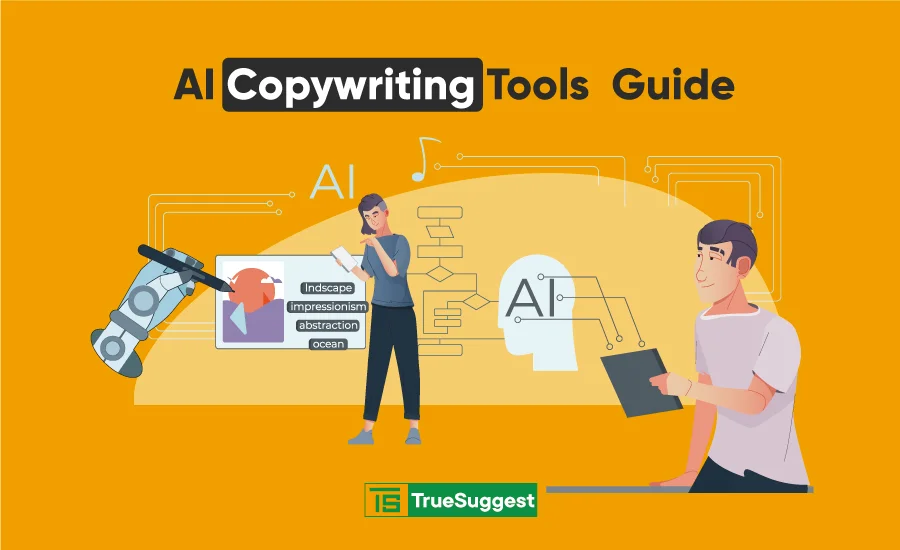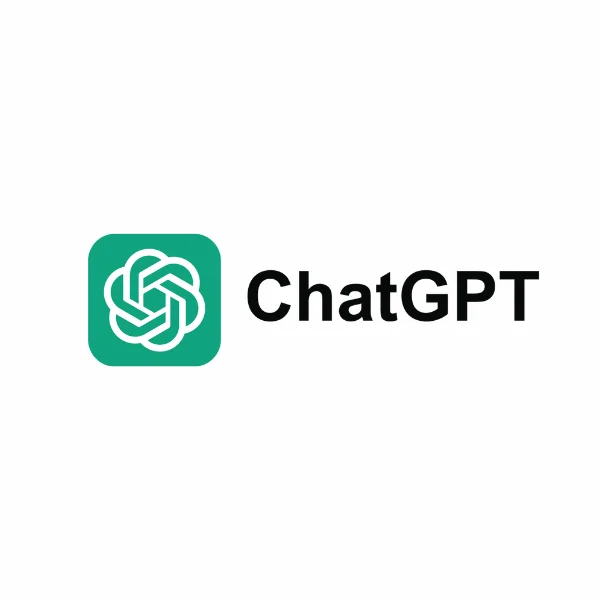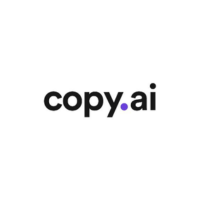AI Copywriting Tools

In the ever-evolving digital landscape, content creation has become a cornerstone for businesses aiming to engage with their audiences effectively. However, the demand for high-quality content often outpaces the supply, leading to the emergence of innovative solutions to bridge this gap. One such innovation is the AI copywriting tool. These tools harness the power of artificial intelligence to generate, enhance, and optimize written content, significantly reducing the time and effort required by human writers.
AI copywriting tools are designed to assist in various content creation tasks, from generating blog posts and social media updates to crafting compelling marketing copy and product descriptions.
By leveraging advanced algorithms and natural language processing (NLP), these tools can produce coherent, contextually relevant, and engaging content that resonates with the target audience. As businesses strive to maintain a consistent online presence and meet the ever-increasing content demands, AI copywriting tools offer a promising solution that blends efficiency with creativity.
In this article, we will delve deeper into what AI copywriting entails, how these tools function, and the myriad benefits they offer to businesses and content creators alike.
What is AI Copywriting?
AI copywriting refers to the use of artificial intelligence technology to create written content. These tools utilize machine learning algorithms and natural language processing to understand context, tone, and style, generating text that mimics human writing. AI copywriting can produce various types of content, including articles, advertisements, social media posts, and more. By automating the writing process, AI copywriting tools aim to enhance productivity and consistency in content creation while allowing human writers to focus on more strategic and creative tasks.
How Do AI Copywriting Tools Work?
AI copywriting tools operate through a combination of advanced technologies, including machine learning, natural language processing (NLP), and deep learning. Here's a detailed look at how these tools work:
Data Collection and Training
The foundation of AI copywriting tools lies in extensive datasets comprising diverse textual content. These datasets include books, articles, websites, and other written materials. Machine learning algorithms analyze these datasets to understand the structure, syntax, grammar, and style of human language. This process involves training the AI model to recognize patterns and relationships within the text, enabling it to generate coherent and contextually appropriate content.
Natural Language Processing (NLP)
NLP is a crucial component of AI copywriting tools. It enables the AI to understand and interpret human language, including nuances such as tone, sentiment, and context. NLP involves several sub-processes:
- Tokenization: Breaking down text into individual words or phrases.
- Part-of-Speech Tagging: Identifying the grammatical role of each word in a sentence (e.g., noun, verb, adjective).
- Named Entity Recognition (NER): Identifying and categorizing proper nouns and specific information (e.g., names of people, places, organizations).
- Sentiment Analysis: Determining the emotional tone of the text (e.g., positive, negative, neutral).
These NLP techniques allow AI copywriting tools to generate text that aligns with the desired style and context.
Language Generation
Once the AI model is trained and equipped with NLP capabilities, it can begin generating content. The process typically involves the following steps:
- Prompt Input: Users provide a brief prompt or set of instructions outlining the desired content. This can include keywords, topics, or specific guidelines.
- Contextual Understanding: The AI interprets the prompt, considering the context and desired outcome.
- Content Generation: Using the learned patterns and relationships, the AI generates text that aligns with the given prompt.
Iterative Improvement
AI copywriting tools continuously learn and improve through iterative feedback and updates. User interactions, feedback, and corrections help refine the AI's understanding and enhance its ability to produce high-quality content. This ongoing learning process ensures that the AI model evolves and adapts to changing language trends and user preferences.
Integration with Editing and Optimization Tools
To further enhance the quality of generated content, AI copywriting tools often integrate with editing and optimization features. These features may include grammar and spell-checking, readability analysis, keyword optimization, and plagiarism detection. By providing these additional layers of refinement, AI copywriting tools ensure that the final output meets high standards of quality and effectiveness.
Types of AI copywriting tools
AI copywriting tools come in various forms, each designed to assist with different aspects of content creation. Here are some common types
Content Generation Tools
- Blog Post Generators: Tools like Jasper and Writesonic can create full-length blog posts based on a few input keywords or phrases.
- Article Spinners: These tools, such as Spin Rewriter, rewrite existing content to create new, unique versions.
- Caption Generators: Tools like Copy.ai and Lately generate engaging social media captions for platforms like Instagram, Facebook, and Twitter.
- Content Schedulers: Tools like Buffer and Hootsuite, though not strictly for copywriting, often include features that suggest optimal posting times and content ideas.
- Ad Copy Generators: Tools like AdZis and Pencil help create compelling ad copy for platforms like Google Ads, Facebook Ads, and LinkedIn Ads.
- Headline Creators: Tools such as CoSchedule’s Headline Analyzer generate and analyze headlines to optimize for click-through rates.
- Email Copy Generators: Tools like Rytr and Drip can draft personalized email campaigns, newsletters, and promotional emails.
- Subject Line Analyzers: Tools like SubjectLine.com assess and optimize email subject lines to improve open rates.
- Product Description Generators: Tools like CopyMonkey and Snazzy AI create detailed and persuasive product descriptions for online stores.
- SEO Optimizers: Tools like Surfer SEO and Clearscope analyze and suggest improvements for e-commerce content to enhance search engine rankings.
- Story and Poetry Generators: Tools like Sudowrite and Plot Generator assist with crafting stories, poems, and other creative content.
- Script Writing Tools: Tools such as ScriptBook and Celtx AI aid in generating and structuring scripts for films, TV shows, and plays.
- Grammar Checkers: Tools like Grammarly and ProWritingAid not only correct grammatical errors but also suggest stylistic improvements.
- Plagiarism Checkers: Tools like Copyscape and Turnitin ensure the originality of the content by checking for plagiarism.
- Legal Document Generators: Tools like LawGeex and LegalZoom can help draft legal documents and contracts.
- Technical Writing Tools: Tools such as DocuSign and MadCap Flare assist in creating detailed technical documentation and manuals.
These tools leverage natural language processing (NLP) and machine learning to provide relevant, high-quality content tailored to the user's needs, helping to save time and enhance productivity in various writing tasks.
TOP Benefits of AI Copywriting Tools
The advent of AI copywriting tools has brought about numerous benefits for businesses and content creators. Here are some of the key advantages:
1. Increased Productivity
AI copywriting tools significantly enhance productivity by automating repetitive and time-consuming writing tasks. This allows human writers to focus on more strategic and creative aspects of content creation. With AI handling the bulk of the writing, businesses can produce a higher volume of content in a shorter time frame, meeting the demands of their content marketing strategies.
2. Consistency and Quality
Maintaining consistency in tone, style, and quality across various content pieces can be challenging for human writers, especially when dealing with large volumes of content. AI copywriting tools ensure a consistent voice and adhere to predefined guidelines, resulting in uniformity across all written materials. This consistency helps in building a cohesive brand image and maintaining audience trust.
3. Cost-Effectiveness
Hiring and training a large team of writers can be costly for businesses. AI copywriting tools offer a cost-effective alternative by reducing the need for extensive human resources. Once implemented, these tools can generate high-quality content at a fraction of the cost of traditional writing teams. This cost-effectiveness is particularly beneficial for startups and small businesses with limited budgets.
4. Faster Turnaround Times
In today's fast-paced digital environment, timely content delivery is crucial. AI copywriting tools can generate content quickly, significantly reducing turnaround times. This agility enables businesses to respond promptly to market trends, news events, and customer needs, ensuring that their content remains relevant and engaging.
5. Scalability
As businesses grow, their content needs expand as well. AI copywriting tools provide the scalability required to meet these increasing demands. Whether it's generating product descriptions for an expanding e-commerce catalog or creating multiple blog posts for a content marketing campaign, AI tools can scale up to handle large volumes of content efficiently.
6. Enhanced Creativity
Contrary to the perception that AI stifles creativity, these tools can actually enhance it. AI copywriting tools can generate a wide range of ideas, headlines, and content variations, providing writers with a rich source of inspiration. By automating routine tasks, AI frees up human writers to focus on more creative and strategic elements, fostering innovation and originality in their work.
7. Data-Driven Insights
AI copywriting tools can analyze vast amounts of data to identify trends, preferences, and performance metrics. This data-driven approach enables businesses to tailor their content strategies based on insights and analytics, optimizing their marketing efforts for better results. By understanding what works and what doesn't, businesses can refine their content to maximize engagement and conversions.
8. Multilingual Capabilities
In an increasingly globalized world, reaching a diverse audience is essential. AI copywriting tools often come with multilingual capabilities, allowing businesses to create content in multiple languages. This feature is particularly valuable for companies operating in international markets, as it enables them to connect with audiences across different regions and cultures.
9. Personalization
Personalized content resonates more with audiences, driving higher engagement and conversions. AI copywriting tools can create tailored content based on user preferences, behaviors, and demographics. By leveraging personalization, businesses can deliver more relevant and impactful messages to their target audience, fostering stronger connections and brand loyalty.
10. Improved SEO
Search engine optimization (SEO) is crucial for online visibility. AI copywriting tools can generate SEO-friendly content by incorporating relevant keywords, optimizing meta descriptions, and adhering to best practices for search engine rankings. This improves the chances of content being discovered by search engines, driving organic traffic to websites and increasing online presence.
Conclusion
AI copywriting tools offer a wealth of benefits that can transform the content creation process. From increased productivity and consistency to cost-effectiveness and enhanced creativity, these tools empower businesses to meet the growing demands of their content marketing strategies. By leveraging the power of AI, businesses can create high-quality, engaging, and optimized content that resonates with their audience and drives success in the digital landscape.






























